 Daniel Libeskind the space of encounter By Libeskind, Daniel
Daniel Libeskind the space of encounter By Libeskind, Daniel2001 | 224 Pages | ISBN: 0500282579 | PDF | 53 MB
For more than twenty years Daniel Libeskind has been regarded as one of the world's leading architectural theoreticians and educators. Since 1973, he has taught at more than forty institutions, maintaining such distinguished positions as head of the Cranbrook Academy of Art's School of Architecture in Bloomfield, Michigan, founder and director of Architecture Intermundium in Milan, Italy, the Sir Bannister Fletcher Architecture Professor at the University of London in London, England, professor at the University of California, Los Angeles' School of Architecture and Urban Planning in Los Angeles, California, and the First Louis Kahn Professorship at Yale University.Throughout Libeskind's career, his approach to the profession of architecture and the development of the world's built environment has defied convention. He is one of the last heroes of the architecture world's avant-garde. And while he is the recipient of numerous awards and citations for his designs, Libeskind's architectural output has largely consisted of models, drawings, poetry, and ephemera. For years, Studio Libeskind sustained itself as a laboratory for the testing of his boundary-breaking ideas.In 1989 Libeskind competed for the commission to design what would become the Jewish Museum Berlin. He won. Since then, he relocated his office from Milan to Berlin, was nominated for the Pritzker prize for Architecture, and was commissioned to design the Felix Nussbaum Haus, a museum for the city of Osnabrück, Germany, which opened to critical acclaim in 1998. In 1999, he was awarded the Deutsche Architektur Preis (German Architecture Prize) for his Jewish Museum Berlin, a structure that received over 250,000 visitors before it contained even a single work of art.Now, because he has been commissioned to design the extension to the Victoria and Albert Museum in London, England, the Imperial War Museum in Manchester, England, the Jewish Museum in San Francisco, California, the JVC University in Guadalajara, Mexico, and, most recently, the extension to the Denver Art Museum in Denved, Colorado, the world is encountering in built form the riveting design concepts of Daniel Libeskind.the first book to get inside Libeskind's extraordinary world, The Space of Encounter eschews the traditional monograph format as it tracks the architect's life's work, pulling the reader back to the 1980s and guiding him through an often mesmerizing array of ideas and projects extending into the year 2005. By revealing for the first time in book form his project proposal texts, excerpts from lauded speeches and lectures, interviews conducted with international newspapers and periodicals, in addition to his poems and correspondence, this book captures Libeskind at a major turning point in his career. Here, we learn of Libeskind's experience of being a radical educator to becoming a high profile, convincing and inspiring architect. Complementing his brilliantly insightful textual material are his forceful drawings and full-color images of his project models, finished projects, and projects in progress.For more than twenty years Daniel Libeskind has been regarded as one of the world's leading architectural theoreticians and educators. Since 1973, he has taught at more than forty institutions, maintaining such distinguished positions as head of the Cranbrook Academy of Art's School of Architecture in Bloomfield, Michigan, founder and director of Architecture Intermundium in Milan, Italy, the Sir Bannister Fletcher Architecture Professor at the University of London in London, England, professor at the University of California, Los Angeles' School of Architecture and Urban Planning in Los Angeles, California, and the First Louis Kahn Professorship at Yale University.Throughout Libeskind's career, his approach to the profession of architecture and the development of the world's built environment has defied convention. He is one of the last heroes of the architecture world's avant-garde. And while he is the recipient of numerous awards and citations for his designs, Libeskind's architectural output has largely consisted of models, drawings, poetry, and ephemera. For years, Studio Libeskind sustained itself as a laboratory for the testing of his boundary-breaking ideas.In 1989 Libeskind competed for the commission to design what would become the Jewish Museum Berlin. He won. Since then, he relocated his office from Milan to Berlin, was nominated for the Pritzker prize for Architecture, and was commissioned to design the Felix Nussbaum Haus, a museum for the city of Osnabrück, Germany, which opened to critical acclaim in 1998. In 1999, he was awarded the Deutsche Architektur Preis (German Architecture Prize) for his Jewish Museum Berlin, a structure that received over 250,000 visitors before it contained even a single work of art.Now, because he has been commissioned to design the extension to the Victoria and Albert Museum in London, England, the Imperial War Museum in Manchester, England, the Jewish Museum in San Francisco, California, the JVC University in Guadalajara, Mexico, and, most recently, the extension to the Denver Art Museum in Denved, Colorado, the world is encountering in built form the riveting design concepts of Daniel Libeskind.the first book to get inside Libeskind's extraordinary world, The Space of Encounter eschews the traditional monograph format as it tracks the architect's life's work, pulling the reader back to the 1980s and guiding him through an often mesmerizing array of ideas and projects extending into the year 2005. By revealing for the first time in book form his project proposal texts, excerpts from lauded speeches and lectures, interviews conducted with international newspapers and periodicals, in addition to his poems and correspondence, this book captures Libeskind at a major turning point in his career. Here, we learn of Libeskind's experience of being a radical educator to becoming a high profile, convincing and inspiring architect. Complementing his brilliantly insightful textual material are his forceful drawings and full-color images of his project models, finished projects, and projects in progress.
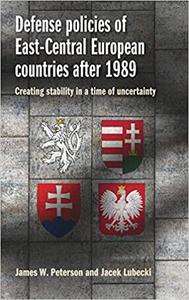


![S.T.A.L.K.E.R. 2 / STALKER 2: Heart of Chornobyl - Ultimate Edition (2024) [+UPDATE 23.12.2024 - v1.1.3] ElAmigos / Polska wersja językowa](https://i.postimg.cc/Zqd8RWGY/UZG8PBE.jpg)



































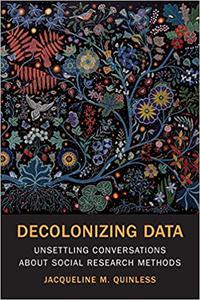

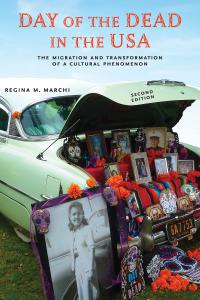

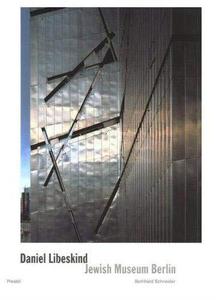
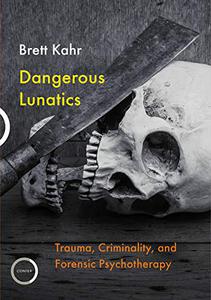










![David Gilmour - Luck and Strange (2024) [FLAC]](https://i.imgur.com/everaBc.jpeg)
![Męskie Granie Orkiestra - Męskie Granie 2024 (2024) [FLAC]](https://i.imgur.com/FAyOxrM.jpeg)
![The Rolling Stones - Hackney Diamonds (2023) [FLAC]](https://i.imgur.com/wCkyyUN.jpg)
![Lady Gaga - Harlequin (2024) [FLAC]](https://i.imgur.com/dcgIA8D.jpeg)
![Natalia Kukulska - Dobrostan (2024) [FLAC]](https://i.imgur.com/bdljG3O.jpeg)
![Kaśka Sochacka - Ta druga (2024) [FLAC]](https://i.imgur.com/hORQKvn.jpeg)
![Kuba Sienkiewicz - Pani Bóg (2024) [FLAC]](https://i.imgur.com/qijCx8Z.jpeg)
![Lanberry - Heca (2024) [FLAC]](https://i.imgur.com/8P7QfeR.jpeg)
![Sara James - PLAYHOUSE (2024) [FLAC]](https://i.imgur.com/m4f8OKg.jpeg)
![Grzegorz Hyży - EPILOG (2024) [FLAC]](https://i.imgur.com/8DA2sBr.jpeg)
![Myslovitz - WIECZORAMI CHŁOPCY WYCHODZĄ NA ULICE (2024) [FLAC]](https://i.imgur.com/l9mMtIG.jpeg)
![Krzysztof Zalewski - ZGŁOWY (2024) [FLAC]](https://i.imgur.com/vh48RAc.jpeg)
![Krzysztof Cugowski - Wiek to tylko liczba (2024) [FLAC]](https://i.imgur.com/SBzgqe2.jpeg)
![Nosowska - Kasia i Błażej (2024) [FLAC]](https://i.imgur.com/mObvVXQ.jpeg)
![sanah - Pianinkowe Kaprysy (2024) [FLAC]](https://i.imgur.com/pVjjPAa.jpeg)
![Kwiat Jabłoni - Pokaz slajdów (2023) [FLAC]](https://i.imgur.com/diERHfZ.jpg)
![Robert Cichy - Spacer po Warszawie (2024) [FLAC]](https://i.imgur.com/ixleU9o.jpeg)
![Viki Gabor - Terminal 3 (2024) [FLAC]](https://i.imgur.com/Q1KCnDs.jpeg)
![Sanah - Kaprysy (2024) [FLAC]](https://i.imgur.com/71OZm4h.jpeg)
![Męskie Granie Orkiestra - Męskie Granie 2023 (2023) [FLAC]](https://i.imgur.com/U4YHo8d.jpg)




